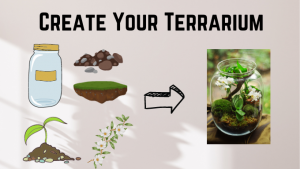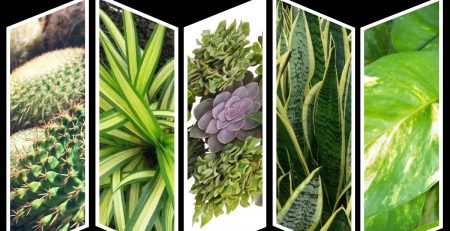Terrariums and Miniature Ecosystems: A Tiny World of Plants
In the midst of our bustling lives, a little touch of nature can work wonders, offering respite and rejuvenation. Imagine having your own, self-contained ecosystem within arm’s reach, a world where life flourishes, where you can watch the beauty of nature unfold in miniature form. Welcome to the enchanting world of terrariums, a captivating fusion of art, science, and plant magic. Terrariums are more than just decorative displays; they are living, breathing windows into the natural world, encapsulated in glass, where ecosystems thrive in harmony. In this blog, we’ll embark on a journey to explore the enchanting universe of terrariums, learn how to craft our own, and unlock the secrets of these tiny, self-sustaining worlds.
What is a Terrarium?
The term “terrarium” is derived from the Latin words “terra” (earth) and “-arium” (place). The concept of creating enclosed plant environments has ancient roots, but it gained popularity in the 19th century. Nathaniel Bagshaw Ward, in 1829, accidentally discovered the concept when he placed a fern and some soil in a closed glass container to study moth caterpillars. To his surprise, a tiny fern spore that had previously gone unnoticed in the soil grew into a healthy fern plant.This discovery led to Ward’s development of the Wardian case, a sealed glass container that provided controlled conditions for plants to thrive.
A Terrarium is a small, enclosed container used for growing and displaying plants. It is typically made of glass or plastic and can come in a variety of shapes and sizes. Terrariums are designed to create a miniature ecosystem, with plants and sometimes small animals such as insects or reptiles, living in a self contained environment.
They come in two primary types: open and closed terrariums. Open terrariums, as the name suggests, have openings that allow air to flow freely, while closed terrariums are sealed environments that recirculate moisture, creating a self-sustaining microcosm.

Open Terrariums: Open terrariums are containers that have openings or vents, allowing for airflow. These are generally easier to maintain and are suitable for plants that don’t require high humidity. Open terrariums can include a variety of plants, including succulents and air plants
Closed Terrariums: Closed terrariums, also known as sealed or self-contained terrariums, are fully enclosed, creating a mini-ecosystem that recirculates water and air. They typically feature a tight-fitting lid or cork, which creates a humid environment ideal for plants that thrive in high humidity, like ferns and mosses. Closed terrariums require minimal watering because the water cycle within the enclosure sustains the plants. As plants transpire, they release moisture into the air, which then condenses on the container’s walls and drips back onto the soil.
Essential Ingredients for a Terrarium
To create a successful terrarium, you’ll need the following essential ingredients:
- Soil: Choose a well-draining potting mix suitable for the types of plants you intend to include in your terrarium.
- Rocks and Pebbles: These serve as a drainage layer, preventing excess water from accumulating at the bottom of the container.
- Activated Charcoal: Charcoal helps filter the air within the terrarium, reducing the risk of odours and mould.
- Plants: Selecting the right plants is key to your terrarium’s success. Opt for low-maintenance varieties like succulents, air plants (Tillandsia), or mosses, as they thrive in the closed environment of a terrarium.
 Steps to Create Your Miniature Ecosystem
Steps to Create Your Miniature Ecosystem
- Layer the Base: Start by adding a layer of rocks and pebbles for drainage, followed by a thin layer of activated charcoal to keep the environment fresh.
- Add Soil: Gently add the potting soil, creating a level surface for planting.
- Plant Selection and Placement: Carefully plant your chosen greenery, arranging them in an aesthetically pleasing manner. Be creative with your design, considering colour, texture, and height variations.
- Decorate: If desired, you can add decorative elements such as small figurines, tiny rocks, or miniature furniture to enhance the visual appeal.
- Watering and Maintenance: Water your terrarium sparingly, as closed terrariums require very little moisture. Ensure the lid is sealed to trap humidity, creating a self-sustaining environment.
The Science Behind Terrariums
Terrariums are not just visually captivating; they’re also fascinating microcosms of ecology. They operate on the principles of the water cycle and photosynthesis. The closed environment traps moisture, allowing plants to recycle water through transpiration and respiration. This, in turn, creates a self-sustaining cycle that requires minimal external intervention.
Terrarium Themes and Design Ideas
For the creative souls, terrariums offer an array of themes and design possibilities. You can craft themed terrariums like deserts, woodlands, or even whimsical fairy gardens. Personalise your miniature ecosystem to reflect your unique style and interests.
Conclusion
Terrariums are not only a source of natural beauty but also a hands-on way to explore ecosystems and the science of biology and ecology. Terrariums also provide a unique opportunity to explore the delicate balance of ecosystems on a small scale. Whether you’re a seasoned gardener or a newcomer to the world of plants, terrariums offer a captivating way to connect with nature and appreciate the wonders of life encapsulated in glass.














Leave a Reply